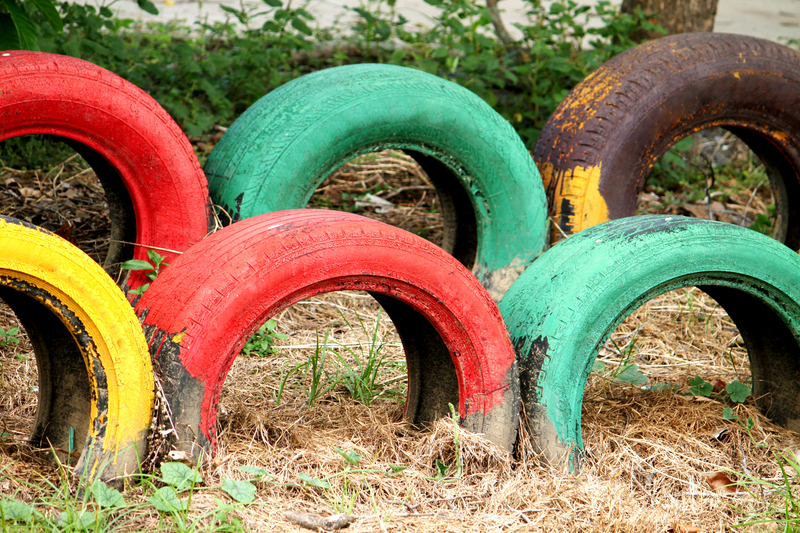Best Practices for Environmentally Safe Cookware Disposal
Disposing of old or damaged cookware is a common occurrence in kitchens around the world. However, most home cooks aren't aware that tossing pans, pots, and skillets in the regular trash can have lasting negative impacts on the environment. The average household accumulates various cookware materials, from nonstick pans and cast iron to ceramic and stainless steel--each with its own set of considerations for safe and eco-friendly disposal. Understanding the best practices for environmentally safe cookware disposal is crucial to reducing landfill waste, conserving resources, and minimizing your ecological footprint.

Why Environmentally Safe Cookware Disposal Matters
It's tempting to discard a chipped pot or burnt pan with the rest of your garbage, but improper disposal can lead to harmful chemicals leaching into the soil, wasted resources, and unnecessarily massive landfills. Many cookware materials are non-biodegradable, while certain nonstick coatings can be hazardous if improperly incinerated or left to break down over time. That's why sustainable cookware disposal practices are necessary to protect the planet and meet modern environmental standards.
- Environmental Impact: Old pans can contribute to metal pollution or release toxins if not handled correctly.
- Resource Conservation: Recycling cookware allows metals and other materials to be reused.
- Legal Compliance: Certain areas have regulations about disposing of hazardous household items, including certain cookware types.
What Types of Cookware Need Special Disposal?
Cookware is manufactured with a wide variety of materials, each of which affects the best disposal method. Materials that warrant special attention include:
- Nonstick (Teflon or PTFE-coated): These can contain chemicals that shouldn't enter landfills.
- Ceramic-glazed cookware: Sometimes coated with glazes that contain lead or cadmium.
- Aluminum: Highly recyclable, yet often thrown away improperly.
- Cast iron: Durable and long-lasting, but can be recycled if unusable.
- Stainless steel and copper: Valuable materials ideal for scrap yards or recycling centers.
- Glass cookware: Heat-resistant glass typically can't go in curbside glass recycling.
Creative Ways to Reuse and Repurpose Old Cookware
Before getting rid of your pans and pots, consider that **reusing or repurposing** is often the most sustainable first step in the environmentally responsible disposal process. Here are some creative, eco-friendly cookware reuse and upcycling ideas:
- Plant Containers: Turn deep pots or casserole dishes into unique planters for your home or garden.
- Art Projects: Use pans as canvases for wall art or garden sculptures.
- Serving or Storage: Old enamelware can make rustic kitchen displays or storage bins.
- Donate: If the cookware is still usable, donate it to shelters, thrift stores, or community centers.
- Kids' Play: Unused pots and pans can find new purpose in children's play kitchens or as musical instruments.
Reusing is the greenest way to prolong cookware life, minimizing waste while sparking creativity. It can also lessen demand for new products, which in turn conserves resources and energy.
How to Recycle Cookware Sustainably
If your cookware is past the point of function, recycling is the next best step in eco-friendly cookware disposal. However, not all recycling centers accept all types of kitchenware. Here's a comprehensive guide to recycling cookware safely and responsibly:
1. Identify the Material
The first step is to determine your cookware's primary material. The most commonly recycled materials include:
- Aluminum
- Stainless steel
- Copper
- Cast iron
2. Contact Local Scrap Yards and Recycling Centers
Not all municipal curbside recycling programs can accept bulky cookware, especially with mixed materials or handles attached. Instead, call nearby scrap metal dealers or recycling facilities and ask:
- Which cookware materials they accept
- Whether they need items stripped of non-metal parts (like handles or glass lids)
- Their hours and drop-off procedures
3. Prepare Cookware for Recycling
- Remove all non-metal components, such as plastic, rubber, or wooden handles and knobs.
- Separate different metals: If your pan features a copper base and stainless steel body, disassemble if possible so each material is recycled correctly.
- Clean all residue before recycling to reduce contamination.
4. Special Issues with Nonstick and Coated Cookware
Cookware with nonstick coatings (like Teflon or PTFE) often requires special handling, as some recycling centers consider nonstick pans "contaminated material." Follow these tips for proper nonstick cookware disposal:
- Check your local government or waste management website for hazardous waste collection programs.
- Some manufacturers, especially big brands, may offer take-back or recycling programs for old nonstick pans.
- If recycling is unavailable, dispose according to hazardous waste guidelines, not household trash.
How to Safely Dispose of Damaged or Unusable Cookware
Sometimes, cookware is damaged or constructed from materials that can't easily be recycled or reused. To ensure environmentally safe disposal of cookware, here are the best practices for these cases:
Hazardous Glazes and Coatings
Ceramic-glazed cookware or imported pots may contain lead or cadmium, which can be dangerous if released into the environment. Never break or landfill known or suspected hazardous cookware. Instead:
- Contact your local hazardous waste program for safe drop-off locations.
- Look up manufacturer recalls or public safety information for proper handling instructions.
Heavily Rusted or Chipped Cookware
- Cast iron with deep rust or cracks may still be accepted at most scrap metal yards.
- Ceramic or glass cookware that is chipped or broken should not go into curbside recycling; instead, wrap it securely and bring it to a landfill or specialty collection site.
Sustainable Cookware Brands
One way to reduce the burden of cookware disposal is to buy sustainably-made pots and pans with end-of-life recycling in mind. A growing number of brands now offer eco-friendly cookware, such as:
- Brands with Take-Back Programs: Some companies accept back their products for recycling, refurbishment, or disposal (such as GreenPan, Caraway, and Made In).
- 100% Recyclable: Brands making pans with pure metals and detachable handles facilitate easier recycling.
- Long-lasting Design: Cast iron and high-quality stainless steel, which can last lifetimes with care, further reduce environmental impact.
By supporting these brands, consumers encourage more companies to adopt eco-conscious manufacturing and disposal solutions.
Best Practices for Eco-Friendly Cookware Disposal
To summarize, here are the most effective strategies for environmentally safe cookware disposal:
-
Evaluate for Reuse:
- Can the cookware be donated, repurposed, or repaired?
-
Research Local Recycling Options:
- Call recycling centers or scrap yards before bringing cookware.
- Follow local regulations for hazardous materials.
-
Prepare and Sort Your Cookware:
- Remove non-metal parts and sort by material whenever possible.
-
Dispose of Toxic or Non-recyclable Items Responsibly:
- Never toss hazardous cookware in the trash; use proper hazardous waste programs.
-
Support Sustainable Brands:
- Choose cookware purchased with closure in mind--recyclable materials or take-back options.
Where to Find Cookware Recycling Programs
Several resources can help you find environmentally-friendly cookware disposal options in your area:
- Earth911.com: A searchable recycling locator tool for cookware and many other household items.
- Municipal Waste Sites: Local government or public works websites provide up-to-date details about hazardous and metallic recycling.
- Brand Websites: Some manufacturers offer return and recycle programs listed on their official sites.
- Community Donation Centers: Local charities may accept used kitchenware in good condition.

Avoiding Common Mistakes in Cookware Disposal
Even with the best intentions, people sometimes unknowingly harm the environment. Here's how to avoid common mistakes:
- Never mix cookware with household recycling unless your local authority confirms acceptance.
- Do NOT incinerate PTFE or nonstick cookware.
- Do not break glass or ceramic cookware for disposal--wrap and handle carefully.
- Original packaging isn't recyclable with cookware if coated with plastic or foam.
- Always ask about restrictions or fees at recycling centers to ensure your cookware isn't rejected or landfilled by default.
Conclusion: A Greener Kitchen Starts with Responsible Cookware Disposal
Whether you are a chef, home cook, or new homeowner cleaning out your cabinets, responsible cookware disposal should always prioritize the environment. By following the best practices for environmentally safe cookware recycling, repurposing, and disposal outlined above, you'll limit waste, conserve resources, and contribute to a healthier planet. Take the extra time to research, prepare, and dispose of cookware the right way--every sustainable choice, however small, adds up to meaningful change.
Start the habit today: The next time you think about throwing out that old frying pan or baking dish, use these guidelines for responsible, eco-friendly cookware disposal. Let's work together towards a greener kitchen and a more sustainable world!
